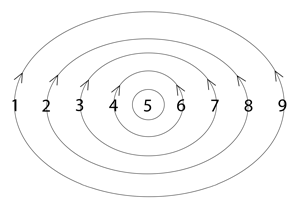learning
6-2-8
Conventional Understanding
We typically view learning as acquiring new information or skills through effort and instruction. Educational systems treat knowledge as something external that must be transferred to students through tests and structured lessons. This assumes learning happens to us rather than through us, positioning students as containers to be filled rather than fields of experience already connected to what they seek to know.
Resonant Understanding
Word Cosmology reveals “learning” carrying a 6-2-8 resonance pattern, sharing this numeric signature with “God” and “human experience.” Like a mirror reflecting light that was always present, learning doesn’t add something new but reveals connections already existing within our field of awareness. This explains why genuine understanding feels like recognition rather than acquisition—we’re aligning with patterns already present in our experience.
Expressions Spectrum
In balanced expression, this resonance appears as “being present,” “emerge,” and “integrate information,” showing learning as a natural unfolding process. When balanced, learning feels energizing and solution-oriented, allowing us to build relationships with information without forcing understanding.
When over-modulated, learning becomes “conclusion,” “control attention,” and “self-interest.” This state turns the natural flow of understanding into a game of acquisition, where learning serves identity rather than expansion. Systems like theology and therapy can become rigid frameworks when approached with attachment to specific outcomes.
Under-modulated expressions like “chained,” “barrier,” and “trapped” show disconnection from the learning process. Here, learning feels threatening, creating confusion and insecurity when we run from rather than embrace experience.
Russell’s Cosmogony Connection
Walter Russell’s work in “A New Concept of the Universe” illuminates this pattern when he writes: “Once in a while, in long century periods, some vast new knowledge comes to the slowly unfolding race of man through cosmically-inspired geniuses, or men of super-vision who have an awareness of the reality which lies beyond this universe of illusion.” This perspective aligns with learning as a process of revelation rather than accumulation—recognizing patterns that already exist rather than creating new ones.
Russell’s cosmogony describes a universe emerging from unified Light rather than separate substances—a perspective that parallels how learning emerges through relationship with what already exists rather than acquiring something external. The uncategorized expressions like “center of gravity,” “light waves,” and “space” reflect Russell’s emphasis on the centrality of organizing principles in understanding the cosmos.
Practical Implications
This understanding invites us to approach learning through presence rather than effort. Instead of forcing conclusions, we can create conditions where understanding emerges naturally through relationship with information.
As Russell demonstrated in his work with scientists like Thomas Edison and Robert Millikan, learning becomes most powerful when it aligns with natural principles rather than imposing artificial frameworks. Balanced expressions show how attention functions differently when allowed to organize naturally rather than being controlled or fragmented.
Since learning shares position 8 with God, we can recognize it as participating in the same integrative function that organizes the cosmos—not a separate activity but the natural reflection of universal principles through human experience. This transforms education from transmission of separate facts to fostering awareness of the organizing patterns that connect all knowledge.


